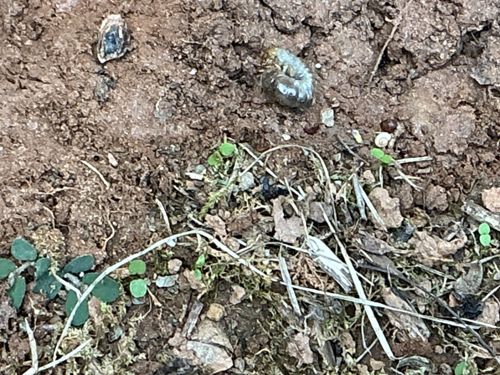White Grub (Larva of Scarab Beetles)
Scientific Name: Various species within Scarabaeidae (e.g., Phyllophaga spp., Popillia japonica)
Order & Family: Coleoptera, Scarabaeidae
Size: 1.5 cm to 4 cm (0.6 to 1.6 inches) in length, depending on the species and larval instar.

Natural Habitat
Found in soil, typically beneath turfgrass, gardens, and agricultural fields. They prefer moist soil with abundant organic matter and plant roots to feed on.
Diet & Feeding
Primarily feed on the roots of grasses, crops, and other plants. They can also consume decaying organic matter in the soil.
Behavior Patterns
White grubs are C-shaped larvae that live entirely underground. They are slow-moving and typically found curled up when disturbed. Their life cycle usually lasts one to three years, depending on the species, with the larval stage being the most destructive. They move closer to the surface to feed during warmer months and burrow deeper into the soil during colder periods for overwintering.
Risks & Benefits
Potential risks: White grubs are significant agricultural and horticultural pests. Their feeding on plant roots can cause severe damage to lawns, gardens, and crops, leading to wilting, yellowing, and eventual death of plants. Benefits: Scarab beetles (the adult form) can play a role in pollination. Some species of grubs (e.g., dung beetle larvae) are decomposers and contribute to nutrient cycling. However, the grubs pictured are generally considered pests due to their root-feeding habits.
Identified on: 9/22/2025